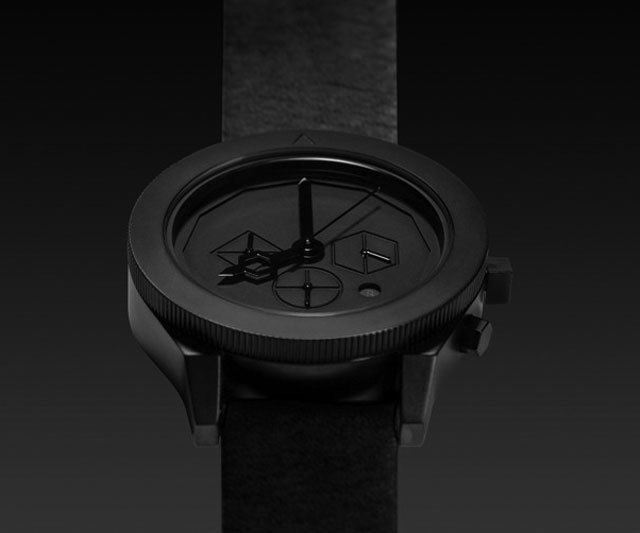Active 28 March 2006– Role Light role | Country United Kingdom Part of 51st Infantry Brigade | |
 | ||
Scots black watch homecoming parade perth perthshire scotland april 20th
The Black Watch, 3rd Battalion, Royal Regiment of Scotland (3 SCOTS) is an infantry battalion of the Royal Regiment of Scotland. The regiment was created as part of the Childers Reforms in 1881, when the 42nd (Royal Highland) Regiment of Foot (The Black Watch) was amalgamated with the 73rd (Perthshire) Regiment of Foot. It was known as The Black Watch (Royal Highlanders) from 1881 to 1931 and The Black Watch (Royal Highland Regiment) from 1931 to 2006. Part of the Scottish Division, it was the senior regiment of Highlanders.
Contents
- Scots black watch homecoming parade perth perthshire scotland april 20th
- The pipes drums of black watch the royal regiment of scotland the scots guard usa 2013
- Source of the name
- Early history
- Regular Army
- Territorial Force
- New Armies
- Territorial Army
- 1950s to 1970s
- 1997 Hong Kongs Handover Ceremony
- 2000s
- Uniform and traditions
- Notable members
- Recipients of the Victoria Cross
- Battle honours
- Colonels in Chief
- Regimental Colonels
- Alliances
- Anecdotes
- In popular culture
- References

The pipes drums of black watch the royal regiment of scotland the scots guard usa 2013
Source of the name

The source of the regiment's name is uncertain. In 1725, following the Jacobite rebellion of 1715, General George Wade was authorised by George II to form six "watch" companies to patrol the Highlands of Scotland, three from Clan Campbell, one from Clan Fraser, one from Clan Munro and one from Clan Grant. These were to be "employed in disarming the Highlanders, preventing depredations, bringing criminals to justice, and hindering rebels and attainted persons from inhabiting that part of the kingdom." The force was known in Gaelic as Am Freiceadan Dubh, "the dark" or "black watch".

This epithet may have come from the uniform plaids of dark tartan with which the companies were provided. Other theories have been put forward; for instance, that the name referred to the "black hearts" of the pro-government militia who had sided with the "enemies of true Highland spirit", or that it came from their original duty in policing the Highlands, namely preventing "blackmail" (Highlanders demanding extortion payments to spare cattle herds).
Early history

The regiment was created as part of the Childers Reforms in 1881, when the 42nd (Royal Highland) Regiment of Foot (The Black Watch) was amalgamated with the 73rd (Perthshire) Regiment of Foot to form two battalions of the newly named Black Watch (Royal Highlanders). The 42nd became the 1st Battalion, and the 73rd became the 2nd Battalion.

The 1st Battalion saw action at the Battle of Tel el-Kebir in September 1882 during the Anglo-Egyptian War. It was in combat again at the First and Second Battles of El Teb in February 1884, the Battle of Abu Klea in January 1885 and the Battle of Kirbekan in February 1885 during the Mahdist War. The 2nd Battalion suffered heavy losses at the Battle of Magersfontein in December 1899 during the Second Boer War.
Regular Army

The 1st Battalion landed at Le Havre as part of the 1st Brigade in the 1st Division in August 1914 for service on the Western Front. It saw action during the Retreat from Mons in August 1914, the First Battle of the Marne in September 1914 and the First Battle of the Aisne later in September 1914; it also took part in the advance to the Hindenburg Line in September 1918.
The 2nd Battalion landed at Marseille as part of the Bareilly Brigade in the 7th (Meerut) Division in October 1914 for service on the Western Front. It took part in the defence of Givenchy in December 1915 and then moved to Mesopotamia later that month and saw action during the siege of Kut in Spring 1916, the fall of Baghdad in March 1917 and the Battle of Istabulat in April 1917. It transferred to Palestine in January 1918 and took part in the Battle of Megiddo in September 1918.
Territorial Force
The 1/4th (City of Dundee) Battalion landed at Le Havre as part of the Bareilly Brigade in the 7th (Meerut) Division March 1915 for service on the Western Front and, following heavy losses at the Battle of Neuve Chapelle in March 1915 and the Battle of Festubert in May 1915, amalgamated with 2nd Battalion in September 1915. The 1/5th (Angus and Dundee) Battalion landed at Le Havre as part of the 24th Brigade in the 8th Division for service on the Western Front. It also saw action at the Battle of Neuve Chapelle in March 1915 and the Battle of Festubert in May 1915. The 1/6th (Perthshire) Battalion and the 1/7th (Fife) Battalion landed at Boulogne-sur-Mer as part of the 153rd Brigade in the 51st (Highland) Division in May 1915 for service on the Western Front. They saw action at the Battle of the Ancre Heights in October 1916.
New Armies
The 9th (Service) Battalion landed at Boulogne-sur-Mer as part of the 44th Brigade in the 15th (Scottish) Division in July 1915 for service on the Western Front. It suffered over 700 wounded or killed-in-action at the Battle of Loos in September 1915 and then suffered heavy losses again at the Second Battle of the Somme in August 1918. The 10th (Service) Battalion landed at Boulogne-sur-Mer as part of the 77th Brigade in the 26th Division in September 1915 for service on the Western Front. It moved to Salonika in November 1915 and took part in operations in the Balkans in 1916.
A number of authors state that the regiment was given the nickname "Ladies from Hell" ("Die Damen aus der Hölle") by German troops, allegedly on account of their kilts and fighting qualities.
Regular Army
The 1st Battalion landed in France in September 1939 as part of the 12th Brigade in the 4th Infantry Division for service with the British Expeditionary Force (BEF). The battalion later transferred to the 153rd Brigade of the 51st (Highland) Division and was captured at St Valery-en-Caux during the Battle of France. It was reformed from reserve units of the 9th (Highland) Infantry Division in August 1940 and moved to North Africa in August 1942 where it fought at the Second Battle of El Alamein in October 1942 and then continued to fight in the Tunisian Campaign before it took part in the Allied invasion of Sicily in July 1943. It also took part in the Normandy landings in June 1944, the Battle for Caen later that month and the Battle of the Falaise Pocket in August 1944. It later saw action at the Battle of the Bulge in January 1945, Battle of the Reichswald in February 1945 and the crossing of the Rhine in March 1945.
The 2nd Battalion was serving in Palestine from where it was sent to East Africa in August 1940 and saw action during the Italian conquest of British Somaliland. It was sent to Crete, as part of the 14th Brigade in the 8th Division, and took part in the Battle of Heraklion in May 1941. It moved to North Africa in October 1941 and took part in the break out from Tobruk in November 1941.
Territorial Army
The 4th Battalion landed in France in January 1940 as part of the 153rd Brigade in the 51st (Highland) Division for service with the BEF and then took part in the Dunkirk evacuation in June 1940. The battalion remained in the United Kingdom for the rest of the war.
The 5th Battalion landed in North Africa as part of the 153rd Brigade in the 51st (Highland) Division and fought at the Second Battle of El Alamein in October 1942. It also took part in the Normandy landings, while attached to the 3rd Parachute Brigade, in June 1944 and saw action at the Battle for Caen followed by the Battle of Bréville later that month. It saw combat again at the Battle of the Falaise Pocket in August 1944 and the Battle of the Bulge in January 1945.
The 6th Battalion landed in France in January 1940 as part of the 154th Brigade in the 51st (Highland) Division for service with the BEF. The battalion exchanged places with the 1st Battalion and became part of the 12th Brigade of the 4th Division and then took part in the Dunkirk evacuation in June 1940. It moved to North Africa in the spring of 1943 for service in the final stages of the Tunisian Campaign and then on to the Italian Front in February 1944 where it took part in the Battle of Monte Cassino in the spring of 1944. The Battalion later fought on the Gothic Line before being sent to Greece in late 1944, where it remained for the rest of the war.
The 7th Battalion landed in North Africa as part of the 154th Brigade in the 51st (Highland) Division and fought at the Second Battle of El Alamein in October 1942. It also took part in the Normandy landings in June 1944, the Battle for Caen later that month and the Battle of the Falaise Pocket in August 1944. It later saw action at the Battle of the Bulge in January 1945.
1950s to 1970s
The regiment won honours after the Second Battle of the Hook in November 1952 during the Korean War. The regiment helped to suppress the Mau Mau Uprising in Kenya in 1953 and to suppress the actions of EOKA terrorists during intercommunal violence in Cyprus in the late 1950s.
During the state funeral of John F. Kennedy in November 1963, nine bagpipers from the regiment were invited to travel to the United States and participate in the funeral procession from the White House to the Cathedral of St. Matthew the Apostle. They performed The Brown Haired Maiden, The Badge of Scotland, The 51st (Highland) Division, and The Barren Rocks of Aden.
The Black Watch served in Northern Ireland during the Troubles as part of Operation Banner. The regiment was frequently a major target of the Provisional Irish Republican Army (PIRA) and the Irish National Liberation Army (INLA). A lance corporal serving with the regiment was shot by a sniper in East Belfast in November 1971 and a young private serving with the regiment was killed while on foot patrol in Dungannon, County Tyrone, by a remote control device in July 1978.
1997 (Hong Kong's Handover Ceremony)
The Black Watch was the last British military unit to leave Hong Kong in 1997, and it played a prominent role in the handover ceremony.
2000s
During the 2003 Iraq War, the Black Watch fought during Operation Telic in the initial attack on Basra, and during its deployment, the unit suffered a single fatality. The following year, the Black Watch was dispatched to Iraq again, as part of 4 (Armoured) Brigade. On 12 August, a soldier from the regiment was killed as a result of an improvised explosive device (IED). In October, the Black Watch was at the centre of political controversy after the United States Army requested British forces to be moved further north, outside of the British-controlled Multi-National Division (South East), to replace forces temporarily redeployed for the Second Battle of Fallujah. Despite objections in Parliament, the deployment went ahead. Based at Camp Dogwood, located between Fallujah and Karbala, in an area later dubbed the "Triangle of Death", the Black Watch came under sustained insurgent attack from mortars and rockets. On 29 October, during the journey to their new base, a Black Watch soldier was killed in a road accident. On 4 November, three soldiers and an interpreter were killed by a car bomb at a check point, and on 8 November, another soldier was killed: the high-profile nature of the deployment caused a magnification of these events back home in Britain.
Under a plan devised by Lieutenant General Alistair Irwin and approved by General Sir Mike Jackson, on 16 December 2004, it was announced that the Black Watch was to join with five other Scottish regiments – the Royal Scots, the King's Own Scottish Borderers, the Royal Highland Fusiliers, The Highlanders and the Argyll and Sutherland Highlanders – to form the Royal Regiment of Scotland, a single regiment consisting of five regular and two territorial battalions. The measure, which reflected recruiting difficulties and the inefficiencies inherent in maintaining a number of relatively small separate units, took place on 28 March 2006.
In July 2007 the battalion moved from Palace Barracks in Belfast to Fort George.
On 24 June 2009, it was reported that elements of the battalion numbering about 350 troops carried out one of the largest air assault operations of the NATO troops in Afghanistan, named Operation Panther's Claw, by deploying into and attacking a Taliban stronghold located near Bābājī (باباجی ), north of Lashkar Gah. The operation commenced on 19 June just before midnight. After a number of combat engagements with the insurgents, the soldiers of the battalion secured three main crossing points: the Lui Mandey Wadi crossing, the Nahr-e-Burgha canal and the Shamalan canal. Lieutenant Colonel Stephen Cartwright, Commanding Officer of The Black Watch battalion, was reported saying that this operation established a firm foothold in what was the last remaining Taliban area controlled in the southern Helmand Province. The location of the Taliban force in the area had allowed it to conduct attacks on the A01 highway, a major national route connecting Kandahar and Herat. During 22 June, troops of the battalion also "found 1.3 tonnes of poppy seed and a number of improvised explosive devices and anti-personnel mines before they could be laid." Analysis by the United Nations Food and Agriculture Organisation revealed the haul to be of mung beans, not poppy seed.
The Black Watch is being trained to be mounted on Foxhound vehicles and comes under 51st Infantry Brigade.
Uniform and traditions
The battalion is permitted to retain its most famous distinction, the red hackle on the Tam o'Shanter. The Black Watch's primary recruiting areas are in Fife, Dundee, Angus and Perth and Kinross, with the Battalion Headquarters and regimental museum located at Balhousie Castle, Perth.
Notable members
The following are notable individuals who served with the regiment:
Recipients of the Victoria Cross
The following Black Watch servicemen were awarded the Victoria Cross:
Battle honours
1. awarded 1909 for services of 42nd Regiment.
2. awarded 1914 for services of 42nd Regiment.
3. awarded 1910 for service of 42nd Regiment.
4. awarded 1951 for service of 42nd Regiment.
5. awarded 1889 for service of 73rd Regiment.
6. awarded 1882 for service of 73rd Regiment.
Colonels-in-Chief
Regimental Colonels
Colonels of the regiment were:
Alliances
The battalion has the following alliances:
Before and after the Second World War, the Australian Militia, later renamed the Citizen Military Forces (CMF), included the 30th Battalion, New South Wales Scottish Regiment. This unit was affiliated with the Black Watch.
Canada (from 1862) has its own Black Watch, being raised as the 5th Battalion of the Canadian Militia, being renamed by 1914 as the 5th Regiment (Royal Highlanders of Canada). It adopted its current title, The Black Watch (Royal Highland Regiment) of Canada, prior to the Second World War, and saw action in both world wars.
Anecdotes
When wearing the kilt, it is customary for troops to "go regimental" or "military practice", wearing no underwear. In 1997, a Black Watch soldier received wide press exposure because of windy conditions during a military ceremony in Hong Kong.
